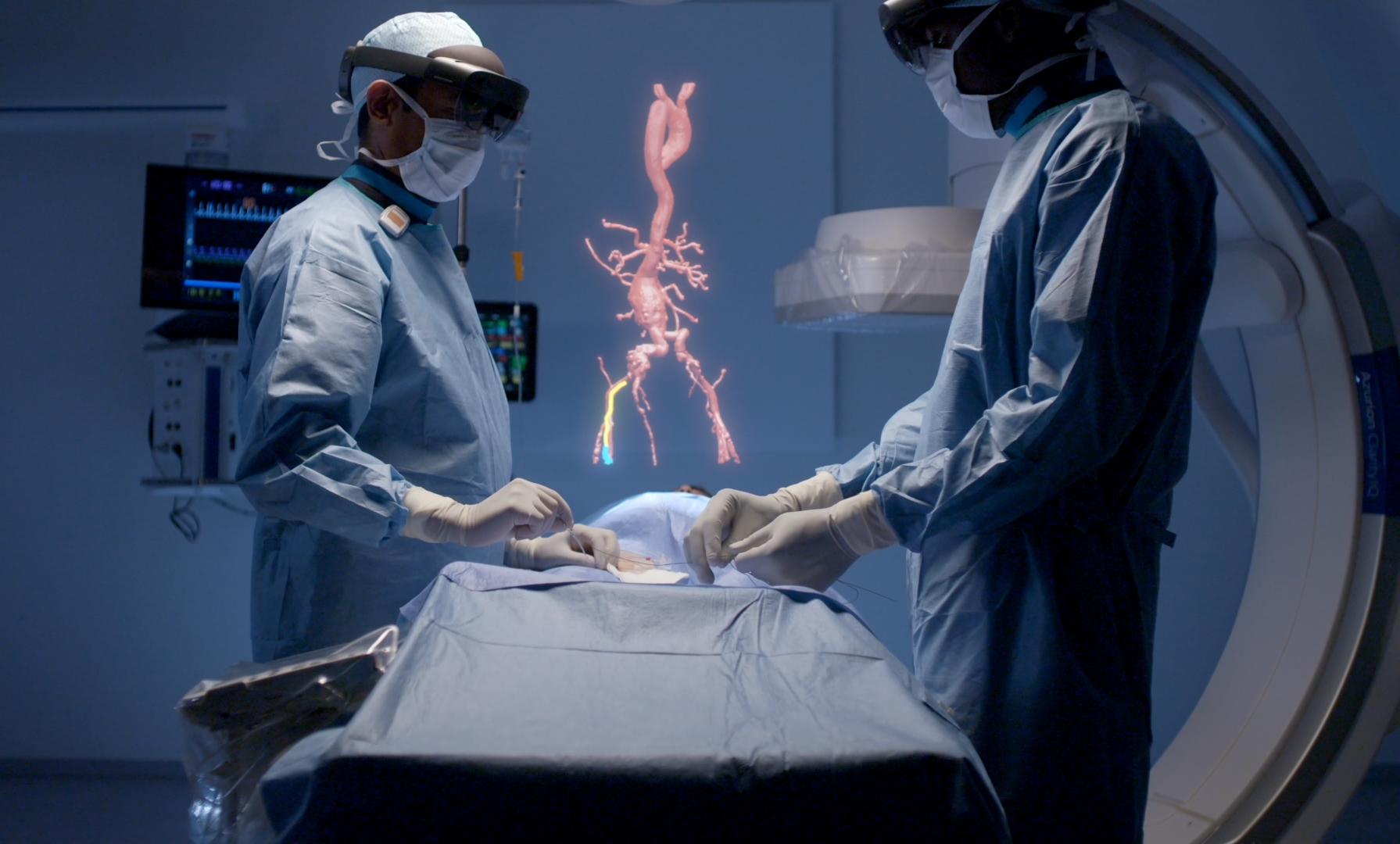It’s 2022, and the world of healthcare is a very different place than it was in 2017. You will find that many of the trends we are seeing today have been around for some time, but they are now becoming more mainstream as people become aware of them and start to implement them into their practices.
Healthcare is a $3 trillion industry worldwide and growing at an average rate of 6% per year. The global population is also increasing, which means more people with chronic conditions will require ongoing care. However, this growth comes with risk since much of the cost associated with this rapid expansion is focused on providing patients after they have already developed a condition or acquired disease. As a result of these risks, governments and insurance companies alike have made major investments in new technologies, products, treatments, procedures, and providers over the last 10 years.
Discussed below are five emerging healthcare trends in 2022.
1. Remote Healthcare and Telemedicine
Telehealth refers to the provision of health services remotely via electronic communication media. It includes all forms of distance education, such as video conferencing, to provide clinical or instructional content over a network. Telehealth applications include both synchronous (real-time) and asynchronous (non-real-time) methods of communicating with remote sites, allowing providers to exchange information on screen or paper regarding the status of a patient, progress of care, and real-time interaction between provider and patient. You can utilize telehealth for various purposes, including:
- Patient monitoring: Observing, assessing, and managing conditions, symptoms, behaviors, treatments, and other important indicators of overall physical well-being and progress towards achieving optimal health.
- Provider consultation/education: Providing advice, instruction, counseling, mentoring, coaching, and support to individuals and groups. Advising patients about treatment options, insurance coverage, and financing considerations.
- Patient follow-up: Monitoring a patient after the initial visit until the desired outcome has occurred.
- Medication adherence intervention: Assistance with medication management related to dosing schedule and frequency.
Remote patient monitoring also can play an important role in chronic care management by providing insight into a patient’s current condition, also by enabling interventions based on trends in physiological data and behavior patterns, improving the efficiency of healthcare delivery systems, reducing waste in hospital waiting rooms, and increasing productivity in the workplace. Read more about the benefits of telemedicine in our blog post The Future of Telemedicine in HealthCare.
2. Personalized Medicine and Genomics
Personalized medicine focuses on treating each person uniquely according to their genetic makeup and lifestyle rather than applying a one-size-fits-all approach. Personalized medicine aims to combine genomics, proteomics, and epigenetics to develop precision treatment strategies that work best for each patient. There are three major types of personalized medicine:
- Genetic-based – Tailored to a specific population, tailored therapy plans may incorporate genomic testing to identify genetic variants that increase susceptibility to a given disease or suggest appropriate therapeutic approaches, including pharmacogenomic tests.
- Proteomic-based – Tailored specifically to an individual via analysis of biomarkers present in blood or other bodily fluids. These include proteins expressed at higher levels in certain diseased states versus others, protein interactions, metabolite changes, and small molecules found only in biofluids but not tissues.
- Epigenetic-based – Tailored to an individual based on how they respond to different environmental stimuli. This type of personalized medicine considers a person’s response to drug therapy after diagnosis.
3. Specialized Outpatient Care Centers
Specialized outpatient clinics and centers are designed to perform specialized procedures, diagnostic imaging, surgeries, complex interventional cardiology procedures, endoscopy, etc., within the context of the standard outpatient clinic. Some examples of this model are advanced wound care centers, cancer centers, fertility centers, orthopedic surgery centers, neurosurgery centers, pain management centers, urology centers, and vascular surgery centers. To better understand this emerging trend, it is helpful to consider some historical landmarks in outpatient care.
In the late 1800s, hospitals began offering surgical procedures and medications in their facilities. Many hospitals had developed their gynecology departments, cardiac catheterization laboratories, MRI machines, and CT scanners by World War II. Today, many specialists have established their specialties within ambulatory settings.
In 1980, the first medical specialty practice was founded as a “physician office-based ambulatory surgery center (ASCs),” which would later evolve into the ASC model we know today. As mentioned above, a specialty center generally consists of multiple clinical services performed under a single roof. Although not necessarily owned by physicians, they often consist of dedicated staff with designated duties that charge patients before and after the procedure.
Additionally, these physicians tend to be board certified and specialize in areas such as Cardiac Catheterization Laboratory, Breast Surgery Center, Cancer Care, Colon & Rectal Surgeries, Endocrinology, Gastroenterology, Gynecology, Hematology, Infertility Services, Interventional Radiology, Joint Replacement Surgery, Nephrology, Pain Management, Pathology, Plastic Surgery, Robotic Surgery, Surgical Oncology, Urology, Vascular Surgery, Women’s Health, etc.
4. Innovative Technology
New technologies are constantly evolving and transforming how both consumers and providers interact and communicate. Newer mobile devices and applications are becoming more affordable to average consumers while improving healthcare delivery through innovative technology solutions. The advent of electronic health records (EHR), computerized physician order entry systems (CPOE), barcode medication administration systems, telemedicine, and patient portals has created new opportunities for medical innovations in efficiency and quality of care. For example, technology can help improve communication among providers while also making available information about patients to them.
The evolution of technology will continue to impact and change how healthcare professionals work and deliver care. Providers need to stay up to date with rapidly changing technology trends to enhance the safety and efficacy of their business practices. In addition, several technological advancements may profoundly alter how healthcare is delivered and reimbursed in future years. These include 5G wireless networks, artificial intelligence (AI), blockchain technology, and virtual reality (VR).
AI: AI technology has already achieved tremendous success in the financial industry, where it is widely used in stock trading, decision support tools, credit scoring algorithms, fraud detection, and other related uses. Most healthcare organizations now use AI to train data-mining programs that identify patterns from large volumes of data and predict outcomes based on those patterns. The ability to accurately predict results allows providers to ensure the best possible treatment for their patients.
Healthcare organizations use AI to identify anomalies or unexpected behavior in a patient’s health record that requires immediate attention and then use this knowledge during subsequent interactions with the patient. This approach enables provider teams to make better decisions faster than ever before.
Blockchain Technology: Blockchain technology refers to a distributed database that simultaneously tracks ownership and transactions across many computers using cryptography. Medical institutions and pharmaceutical companies are testing whether the reliability and security offered by blockchain technology could benefit them because the technology offers greater transparency and traceability than traditional methods do.
Furthermore, the distributed nature of blockchain technology makes it very resistant to hacking attempts, meaning that hackers would need access to multiple servers if they wanted to disrupt its operation.
Virtual Reality: Virtual reality is an emerging technology that aims to immerse users into fully immersive environments in real-time. Healthcare providers are currently exploring how VR can be leveraged as a tool to prepare clinicians for complex procedures like minimally invasive surgeries. By simulating the surgical environment through 3D models and augmented reality, doctors can practice without risking the life of any patients. When surgeons begin performing these operations, they’ll have far less fear than they did when practicing on cadavers’ decades earlier.
5. Extended Reality for Clinical Training and Treatment Planning
In the past decade, medical experts have developed highly precise imaging technologies capable of capturing images of human anatomy at extremely high fidelity. However, the sheer size and complexity of the human body presents several challenges in processing and rendering such images. For example, physicians often rely on computer-aided diagnostic systems to help detect and localize specific types of cancer using CT scans.
Yet, the information provided by these medical imaging devices can become overwhelming to both physicians and patients, particularly if they cannot reduce the volume of data to a manageable level. Likewise, the creation of 3D models of the human body poses significant challenges related to storage requirements, processing power, and memory utilization.
Accordingly, what is needed in the art is a system and method for creating accurate 3D models of the entire human body—from head to toe—without storing the resulting model data file in an unreduced form. There is a need for creating 3D models of the entirety of a human body, which may subsequently be rendered in real-time while moving around the body.
It is believed that such models will facilitate future training of physicians and serve as an important tool in preoperative planning and postoperative analysis. Further still, such models also offer the potential for novel applications in education, research, and clinical care.
Looking to the Future
The healthcare industry has traditionally relied on physical textbooks and manual documentation tools to document patient records. However, with the advent of electronic documents, many of those records have not yet been digitized or migrated to digital formats. Furthermore, most patient records are stored within individual institutions. Still, no centralized repository of patient records exists that permits authorized users to search for, share, and analyze all pertinent record data.
As advances in computing improve, more advanced software programs will likely be developed to address these issues. Some of the above-described trends suggest that solutions already exist. Moreover, with the continued evolution and development of the Internet, new communications protocols and other infrastructure improvements will likely become available in the future. Ultimately, these innovations could result in new methods for sharing data across multiple networks and databases.









